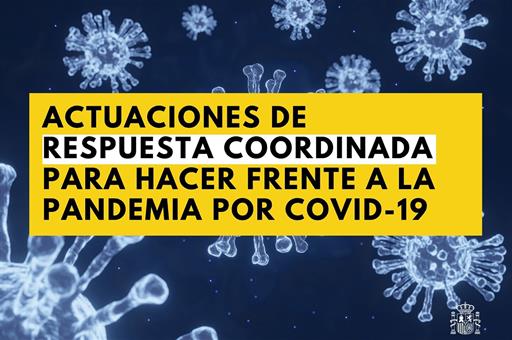Inter-territorial Council of National Health System agrees on a document of coordinated actions in response to pandemic
News - 2020.10.22
This agreement, adopted at the plenary session of the Inter-territorial Council of National Health System, is the framework for common criteria for the interpretation of the epidemiological indicators, agreed at a technical level with all the regional governments. This is aimed at guaranteeing sufficient coordination between regions, giving the regional authorities the possibility of taking such complementary measures as they consider opportune.
Indicators on transmissions
To this end, indicators on transmissions are included (number of cases, positive tests and traceability), on the use of health services (hospital and intensive care beds occupied) and complementary indicators that help evaluate the risk. All of these have been selected for their usefulness in identifying the most important aspects of the epidemiological situation and capacities for response.
Thresholds are established for each of these indicators to determine whether the risk is low, medium, high or extreme.
These thresholds will be based on scientific evidence, international standards and the experience accumulated by the health authorities at all times. The thresholds will be adapted as more scientific evidence at a national and international level becomes available.
Four alert levels
The indicators must always be interpreted as a whole, in a dynamic fashion, specifically assessing both the trend and the speed of transmission. Accordingly, the combination of the results of the indicators will place each region at a certain alert level, from one to four. These will be applied both in scenarios with an increase in risk and a reduction in risk, following prudent criteria.
This means that an increase in the alert level is recommended when the situation is sufficiently consolidated, but in order to drop a level, it will be necessary for the indicators to remain at a lower risk level for at least 14 days.
Response actions
Finally, the document proposes actions to introduce in each territorial unit that has been assessed at alert levels from one to three. For those regions on alert level four, as well as the actions contained in level three, exceptional measures are established that may require the activation of the mechanism provided for in the states of emergency, exception and siege.
The regional governments will decide what measures to apply and when. Before their implementation, they must inform the Ministry of Health of these. In coordination with the ministerial department, they will periodically revise the epidemiological situation to assess, maintain or change the alert level and the measures applied.
Each regional government must carefully monitor the indicators in their region in environments of particular vulnerability, such as day care centres for the elderly, and strengthen their capacities for response in the area affected, including protocols for monitoring and care in these fields.
The document of coordinated response actions to control the spread of COVID-19 is a technical development of the Early Response Plan in a scenario to control the pandemic, which the Inter-territorial Council of the NHS approved on 16 July, adapted to the epidemiological situation from time to time.
Non official translation





